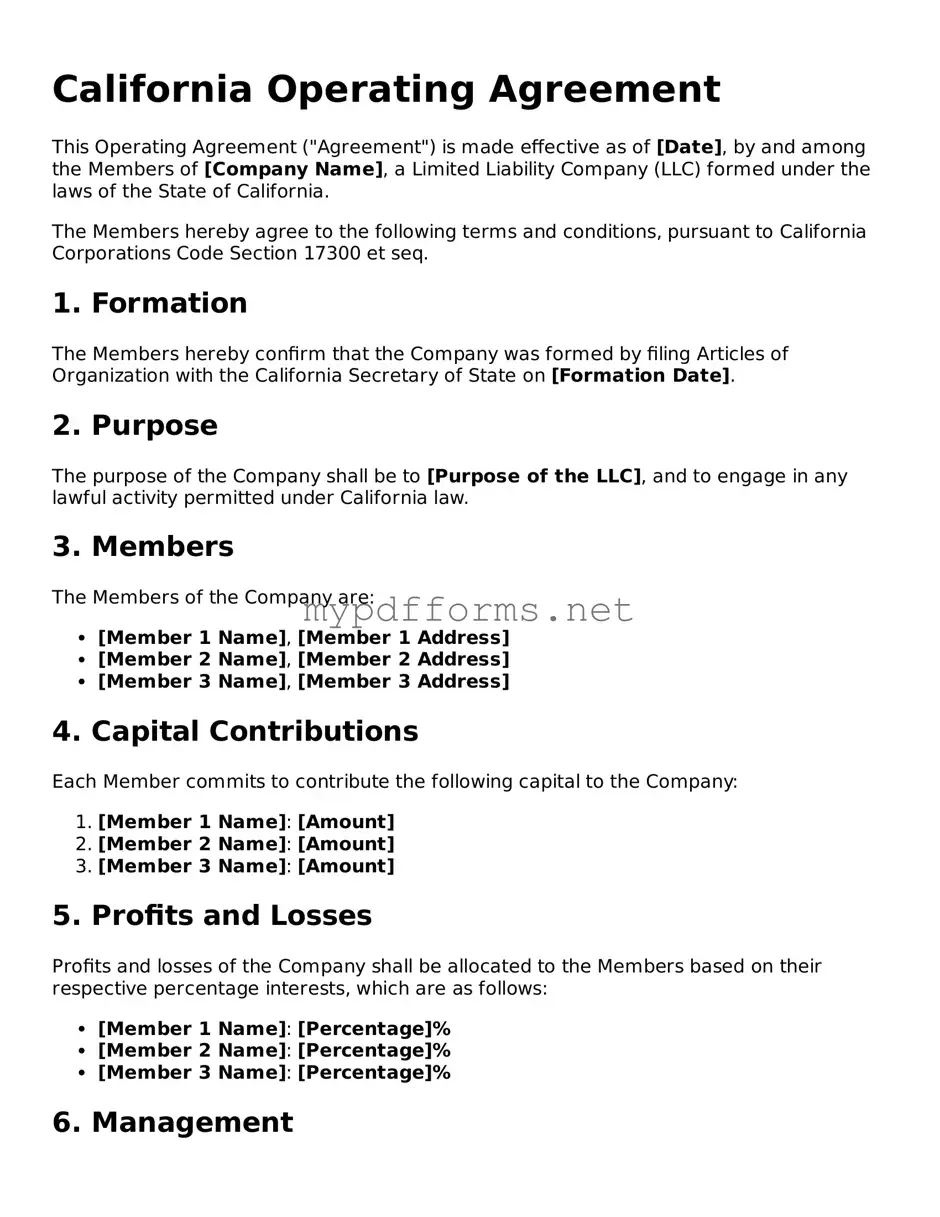The California Operating Agreement is similar to a Partnership Agreement. Both documents outline the roles, responsibilities, and rights of the parties involved. In a Partnership Agreement, partners share profits and losses, while the Operating Agreement focuses on the operations of a limited liability company (LLC). Each document serves to prevent misunderstandings and disputes by clearly defining how the business will be managed and how decisions will be made.
Another document that resembles the Operating Agreement is the Bylaws of a Corporation. Bylaws govern the internal affairs of a corporation, detailing how it will operate, including the roles of directors and officers. Like an Operating Agreement, Bylaws provide a framework for decision-making and help ensure compliance with legal requirements. Both documents are essential for maintaining order and clarity within their respective business structures.
The Shareholders’ Agreement is also comparable to the Operating Agreement. This document is used in corporations to outline the rights and obligations of shareholders. It addresses issues such as the transfer of shares and voting rights. Similarly, the Operating Agreement specifies the ownership interests of LLC members and their voting powers, ensuring that all parties understand their stake in the business.
A Joint Venture Agreement shares similarities with the Operating Agreement as well. This document outlines the terms of a temporary business arrangement between two or more parties. Both agreements define the contributions of each party, how profits and losses will be shared, and the management structure. They serve to clarify expectations and responsibilities, reducing the likelihood of conflicts.
The Limited Partnership Agreement is another document that is akin to the Operating Agreement. In a limited partnership, there are general partners who manage the business and limited partners who invest but do not participate in day-to-day operations. Both agreements delineate the roles and responsibilities of each party, ensuring that everyone understands their position and the extent of their involvement.
The Membership Agreement is also similar to the Operating Agreement, particularly in the context of LLCs. This document outlines the rights and obligations of members within an LLC. Like the Operating Agreement, it details how profits are distributed, how decisions are made, and what happens if a member wants to leave the company. Both documents aim to protect the interests of all members involved.
When completing the necessary paperwork for motorcycle sales in North Carolina, it's essential to have a clear understanding of the legal requirements, particularly regarding the motorcyclebillofsale.com/free-north-carolina-motorcycle-bill-of-sale/, which serves as a vital document to ensure a successful transfer of ownership and compliance with state regulations.
Lastly, the Franchise Agreement can be likened to the Operating Agreement. This document governs the relationship between a franchisor and a franchisee. It outlines the rights and responsibilities of both parties, including fees, marketing, and operational standards. While the Operating Agreement focuses on the internal structure of an LLC, both documents serve to establish clear guidelines and expectations for business operations.
